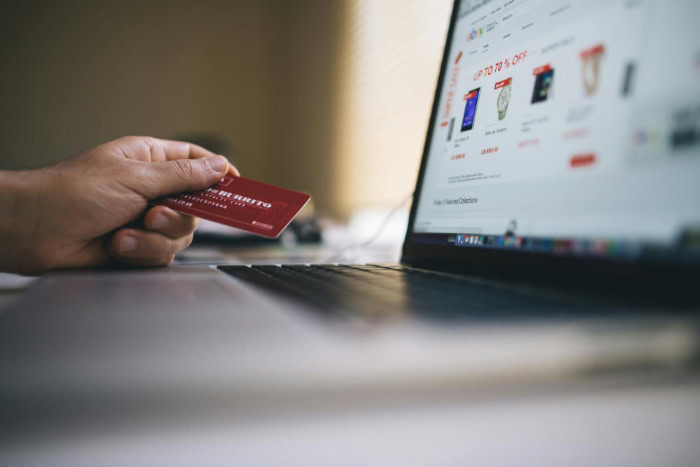How To Stay Safe Online: Stay Ahead Of Cyber Threats

Your digital life holds treasures worth protecting. Every day, millions of people fall victim to hackers, scammers, and data thieves who exploit security gaps and human trust.
From financial fraud to identity theft, online dangers lurk behind innocent-looking emails, tempting downloads, and seemingly secure websites.
Yet staying safe online doesn't require technical expertise or constant paranoia. Simple habits and thoughtful precautions can shield you from most threats.
Think of online security as digital self-defense, a set of practical skills that becomes second nature with practice.
Essential Security Practices
Protecting yourself online starts with strong security foundations. Simple daily habits and careful attention to your digital environment can prevent most common attacks.
By securing your accounts and keeping systems updated, you create multiple barriers against potential threats that target vulnerable devices and weak passwords.
Strong Password Management
Passwords remain your first defense against unauthorized access. Creating unique, complex passwords for each account prevents a single breach from compromising all your online accounts.
A strong password typically contains at least 12 characters, mixing uppercase and lowercase letters, numbers, and symbols.
Consider the passphrase approach: string together random words with numbers and symbols between them. For example, “apple42!banana$tree” is both memorable and difficult to crack through brute force methods.
Password managers like Bitwarden, Proton Pass, and 1Password generate and store complex passwords securely, requiring you to remember only one master password. These tools automatically fill login credentials across devices, making security convenient.
Multi-factor authentication (MFA) adds another crucial layer by requiring something you know (password) and something you have (typically your phone). Even if someone obtains your password, they still cannot access your account without the second verification method.
Authy and Microsoft Authenticator offer reliable MFA protection for most major online services.
For critical accounts like email, banking, and cloud storage, enable MFA whenever possible. Many services now support authentication apps, SMS verification, or hardware security keys like YubiKey for additional protection.
Software and Device Updates
Software vulnerabilities present open doors for attackers. Operating systems and applications regularly release updates that fix security flaws discovered since the previous version.
Postponing these updates leaves your system exposed to threats specifically designed to exploit known weaknesses.
Set your devices to update automatically overnight to minimize disruption. Most modern operating systems allow scheduled updates during off-hours:
- On Windows, access Settings > Update & Security
- On macOS, check System Preferences > Software Update
- On iOS and Android, find update settings in the system preferences section
Pay special attention to browser updates, as browsers serve as your main gateway to the internet. Firefox, Chrome, Safari, and Edge all offer automatic update options that should remain enabled.
For critical software like antivirus programs, banking applications, and communication tools, check regularly for updates if automatic options aren't available. Manufacturers occasionally release emergency patches for severe vulnerabilities that require immediate attention outside regular update schedules.
Remember that older devices eventually lose update support, making them permanently vulnerable. Consider upgrading hardware that no longer receives security patches, particularly if you use these devices for sensitive activities like online banking or private communications.
Protecting Privacy and Personal Data

Your personal information is valuable, not just to you but also to companies, advertisers, and potential cybercriminals. Protecting your privacy online involves careful management of what you share, how you share it, and who can access it.
By taking control of your digital footprint, you can significantly reduce the risk of your personal data falling into the wrong hands.
Adjusting Privacy Settings
Most online platforms and apps offer privacy settings that allow you to control what information is visible to others. Start by reviewing and adjusting these settings on your social media accounts.
Limit your profile visibility to friends or connections only, and consider making your posts private by default. This prevents strangers from accessing personal details or photos that could be misused.
Location tracking is another area where privacy can be compromised. Many apps request access to your location, often for legitimate reasons like providing directions or local recommendations.
However, constant location tracking can create a detailed map of your daily routines. Go through your device settings and disable location access for apps that don't absolutely need it.
For apps that do require location data, consider allowing access only while using the app rather than all the time.
App permissions extend beyond location tracking. Review the permissions granted to each app on your devices.
Does that game really need access to your contacts or microphone? Be particularly cautious with camera and microphone permissions, as these can potentially be used to capture sensitive information or conversations.
Regularly audit and revoke unnecessary permissions to maintain your privacy.
Minimizing Data Sharing
In our interconnected world, it's easy to overshare information without realizing the potential consequences. Before posting on public platforms, pause and consider: Would you be comfortable with this information being seen by anyone, including future employers or strangers?
Avoid sharing sensitive details like your full address, phone number, or financial information on public forums or social media.
For online accounts that don't require your real identity, consider using pseudonyms or nicknames. This practice can help separate your online activities from your real-world identity, making it harder for someone to piece together a complete profile of you from various online sources.
Creating secondary email addresses for non-critical accounts is another effective strategy. Use your primary email only for important communications and accounts, while a separate email can be used for newsletters, online shopping, or other services that might lead to spam or data breaches.
This separation helps contain potential privacy breaches and makes it easier to manage your online presence.
Securing Financial Transactions
Online financial transactions require extra vigilance to protect your money and financial information. Always verify that you're on a secure website before entering payment details.
Look for “https” at the beginning of the website address and a padlock icon in the browser's address bar. These indicators show that the connection is encrypted, helping to protect your data from interception.
However, don't rely solely on these visual cues. Sophisticated phishing sites can mimic security indicators. Double-check the website address to ensure you're on the legitimate site of the company you intend to do business with.
Be wary of links in emails or text messages that lead directly to payment pages, as these could be phishing attempts.
Regularly monitoring your bank and credit card statements is crucial for catching unauthorized activity early. Many banks now offer real-time notifications for transactions, which can alert you immediately to potential fraud.
Set up these alerts if available, and review your statements at least weekly. If you spot any suspicious transactions, no matter how small, report them to your bank immediately.
Fraudsters often start with small charges to test if an account is active before making larger withdrawals.
Safe Browsing and Communication Habits

The internet offers vast opportunities for learning, entertainment, and connection, but it also harbors risks for the unwary. Developing safe browsing and communication habits is essential to protect yourself from online threats.
By learning to recognize potential dangers and taking precautions while connecting to networks, you can significantly reduce your vulnerability to cyber attacks and scams.
Identifying Phishing and Scams
Phishing attacks remain one of the most common and effective methods cybercriminals use to steal personal information. These attacks often come in the form of emails, text messages, or social media messages that appear to be from legitimate sources.
Learning to spot the signs of phishing can save you from falling victim to these deceptive practices.
Pay close attention to the sender's email address in any message requesting personal information or immediate action. Legitimate organizations typically use official domain names, not public email services like Gmail or Hotmail.
Hover over links without clicking to see the actual URL they lead to; if it looks suspicious or doesn't match the purported sender, avoid clicking.
Urgency is a common tactic in phishing attempts. Messages that pressure you to act immediately, threatening account closure or legal action, should raise red flags.
Take a moment to consider whether the request makes sense and verify through official channels if you're unsure.
Spelling and grammatical errors are often present in phishing emails, as many originate from non-native English speakers. While not foolproof, well-written communications are more likely to be genuine.
Be extremely cautious with unsolicited attachments or download links, even if they appear to come from known contacts. Malware often spreads through innocent-looking files.
If you weren't expecting a file, confirm with the sender through a separate channel before opening it.
Remember, reputable organizations won't ask for sensitive information like passwords or credit card details via email. If you're directed to a website to enter such information, manually type the known URL of the organization rather than following links provided in the message.
Using Secure Networks
The networks you use to connect to the internet play a crucial role in your online security. Public Wi-Fi networks, while convenient, can be hotbeds for cybercriminal activity.
When using public Wi-Fi in cafes, airports, or hotels, assume that someone could be monitoring your online activities.
Avoid accessing sensitive accounts or entering personal information while on public networks. If you must conduct important business on public Wi-Fi, use a Virtual Private Network (VPN).
A VPN encrypts your internet traffic, making it much harder for others on the same network to intercept your data. Many reliable VPN services are available, offering both free and paid options with varying levels of security and speed.
At home, securing your Wi-Fi network is equally important. Start by changing the default password on your router to a strong, unique password. This prevents neighbors or nearby strangers from easily accessing your network.
Enable the strongest encryption protocol available on your router. As of 2025, WPA3 is the most secure option for most modern routers. If WPA3 isn't available, use WPA2 at minimum. Avoid older protocols like WEP, which can be easily cracked.
Consider setting up a guest network for visitors or smart home devices. This separates your main network, where you conduct sensitive activities, from potentially less secure devices.
Regularly update your router's firmware to patch security vulnerabilities. Many modern routers offer automatic updates; enable this feature if available.
Managing Social and Ethical Risks

Online safety extends beyond technical measures to include social and ethical considerations. As we interact with others in digital spaces, we encounter challenges like cyberbullying, protecting children online, and maintaining respectful communication.
Addressing these issues requires a combination of practical steps and fostering a culture of digital responsibility.
Handling Cyberbullying and Harassment
Cyberbullying and online harassment can have serious emotional and psychological impacts. If you find yourself targeted, it's important to take action promptly.
Most social media platforms and online services provide tools to block users who are harassing you. Use these features to cut off direct communication from the offender.
Reporting abusive behavior to the platform is equally crucial. Social media sites, gaming platforms, and other online communities typically have reporting mechanisms for violations of their terms of service.
By reporting harassment, you not only protect yourself but also help create a safer environment for other users.
In cases of persistent or severe harassment, consider documenting the abuse. Take screenshots of offensive messages, emails, or posts, ensuring they include timestamps. Save these in a secure location.
While it may be distressing to revisit these incidents, having a record can be invaluable if you need to escalate the matter to law enforcement or take legal action.
Remember, you don't have to face cyberbullying alone. Reach out to trusted friends, family members, or professional support services for emotional support and guidance.
Parental Controls and Child Safety
Protecting children online requires a multifaceted approach combining technological solutions with open communication. Parental control software can be an effective tool for managing what content children can access online.
Many operating systems and devices come with built-in parental control features that allow you to set age-appropriate content filters and screen time limits.
When setting up these controls, involve your children in the process. Explain why certain restrictions are necessary and be open to adjusting them as your children grow and demonstrate responsible online behavior.
This approach helps children understand the importance of online safety rather than viewing it as an arbitrary restriction.
Beyond technical measures, educating children about online risks is paramount. Have ongoing conversations about the potential dangers of interacting with strangers online.
Teach them to recognize inappropriate content and encourage them to come to you if they encounter anything that makes them uncomfortable.
Emphasize the permanence of online actions. Help children understand that what they post or share online can have long-lasting consequences. Encourage them to think critically about the information they encounter and to verify sources before sharing.
Promoting Digital Etiquette
Fostering a culture of respect and responsibility online benefits everyone. Encourage respectful communication by modeling good behavior in your own online interactions.
Before posting or commenting, consider how your words might be interpreted by others. Remember that tone can be easily misunderstood in text-based communication, so be clear and considerate in your language.
Avoid participating in or amplifying harmful online trends or misinformation. Before sharing content, take a moment to verify its accuracy from reliable sources.
Be particularly cautious with sensational or emotionally charged information, as these often spread quickly without proper fact-checking.
When disagreements arise online, strive to engage in constructive dialogue rather than heated arguments. If a conversation becomes unproductive or hostile, it's often best to disengage respectfully.
Your mental well-being is important, and not every online conflict needs to be resolved.
Conclusion
Staying safe online requires a balanced approach of technical safeguards, privacy awareness, and ethical behavior. By creating strong passwords, updating your software, protecting your personal information, and recognizing scams, you build a solid foundation for digital security.
Remember that online safety isn't a one-time setup but an ongoing practice. As technologies evolve and new threats emerge, adapting your habits accordingly keeps your digital life secure.
No security measure is perfect, but layering multiple strategies significantly reduces your risk.
Consider sharing these safety practices with those who might be more vulnerable online, such as older adults navigating digital spaces or children beginning their online journeys. Your knowledge can protect not just yourself but your entire community from digital threats.
Together, we can create a safer online world for everyone.


